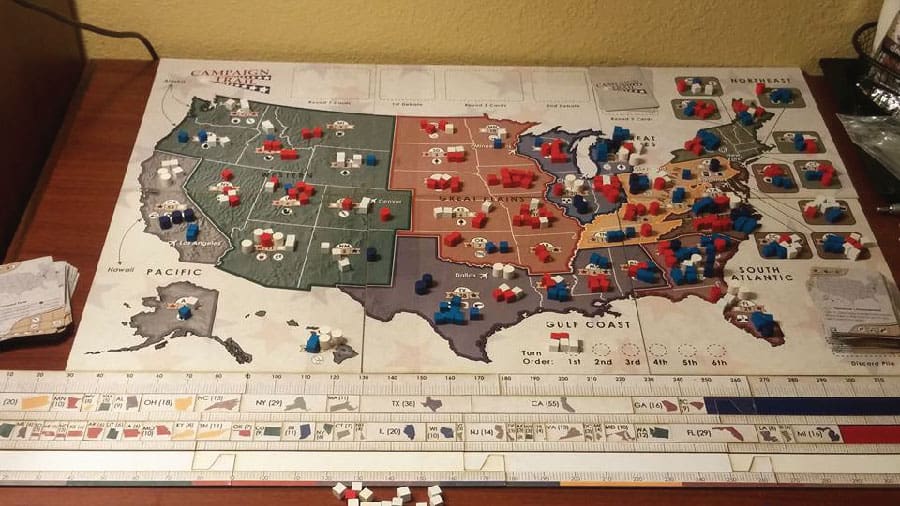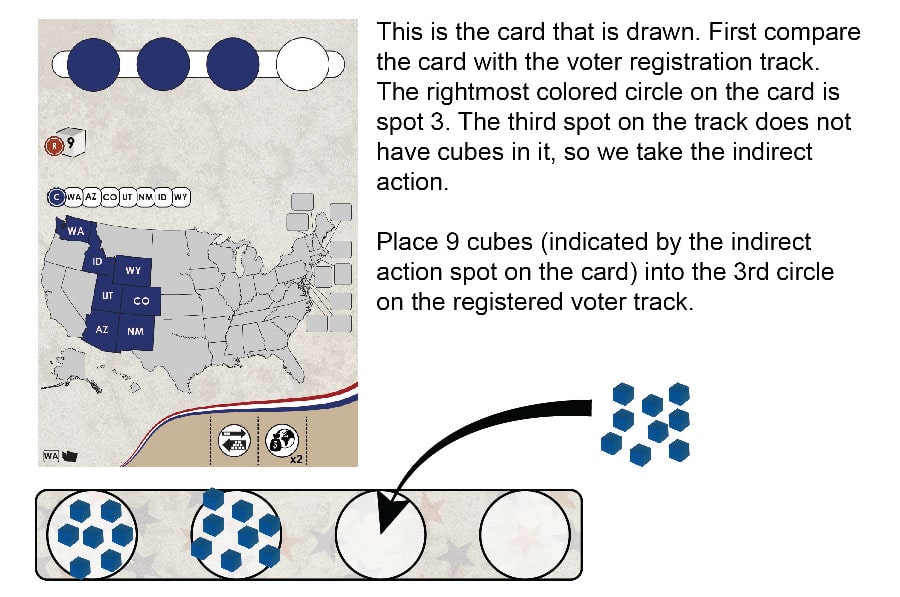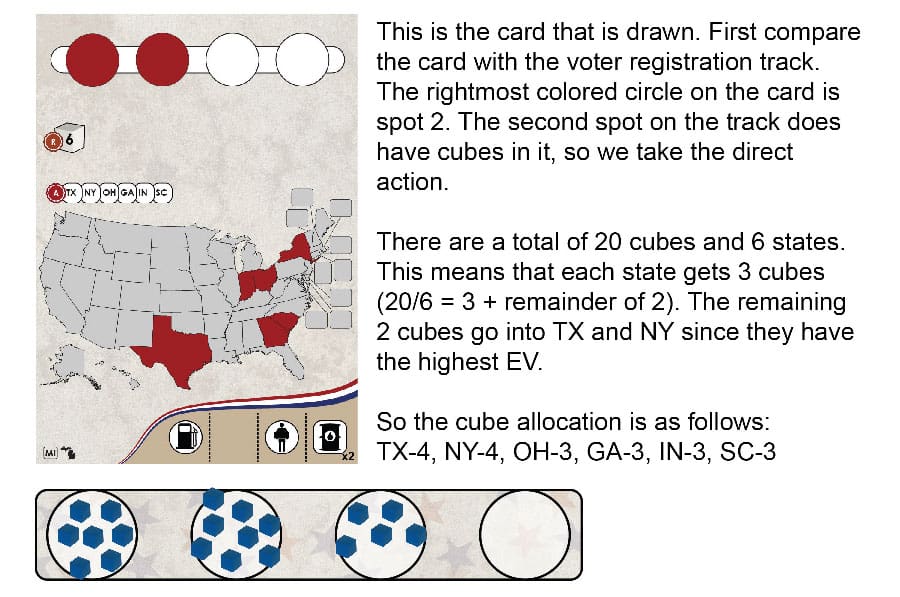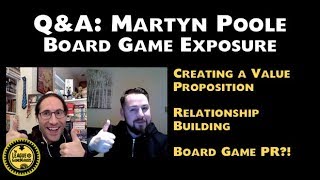
What do you do when your gaming group can’t get together and your family is busy with other endevours? You play with yourself of course! One of the most requested things for the Campaign Trail Kickstarter has been a solo play variant. Being that I’m not a solo play gamer I had no idea how to design a solo play variant.

An early playtest of Campaign Trail Solo
First I read and reread Morten Monrad Peterson’s excellent blog posts on designing the solo variant for Tuscany and Between Two Cities. His advice is to abstract away as much as is possible. For example in Campaign Trail, it doesn’t really matter which action a player takes, but what matters is that voters are put on the board and those voters are put in specific states.
Next, I asked solo play gamers on BGG what they looked for in a solo game and this is what I learned.
- Keep the game as close to the multiplayer as possible
- Keep the game challenging
- Keep the amount of upkeep limited
- Give an actual win condition
KEEP THE GAME AS CLOSE TO THE MULTIPLAYER AS POSSIBLE
The first thing that solo players on BGG told me was they wanted an experience that was as close as possible to the multiplayer game. In Campaign Trail, players have to build up resources of registered voters and money so that they can make large Advertising and Campaigning moves that put voters on the board. In the solo variant we accomplished this by adding a registered voter track to the AI player.

The addition of this track where voters build up over time before being put out on the board at certain trigger points gives a good approximation of the buildup of resources that players go through in the game. Our first attempt put voters out into states at every AI turn. However, this didn’t seem to really fit the feel of the multiplayer game. Developing the registered voter track really helped to mimic the feel of the multiplayer game while keeping it very abstract like Morten suggests.
KEEP THE GAME CHALLENGING
I asked solo players on BGG how challenging they expected solo play to be. The most common answer is they wanted a win percentage between 25%-30%. Players want a challenge. They want to feel like when they sit down to play a solo game that it isn’t guaranteed they will win. Keeping the win percentage low in Campaign Trail was a challange. This is because in a standarn multiplayer game, the players target specific states for a number of reasons – the state has a high electoral vote count, the player is behind in a state, the player is tied or only ahead by a little and wants to strengthen their base. In the Campaign Trail solo variant, the AI player does not specifically target states, but puts lots of voters in whichever states show up on the card.
We were able to keep the game challenging by having the AI players put out significanly more voters and by creating the state groupings on the cards to show high value states. Another way we increased the difficulty of the game was by having the AI player target states with higher electoral votes first as shown in the example below.

KEEP THE AMOUNT OF UPKEEP LIMITED
A solo player game is going to have some amount of upkeep by definition. The Viticulture solo play requires the player to draw a card and place some AI workers on various locations to block those locations. When I asked the question of upkeep on BGG, solo players told me they wouldn’t mind some upkeep as long as it is not a huge amount more than the original game. Campaign Trail does have a significant amount of upkeep anyway with putting out voters into states based on advertising and campaign actions. So we felt we could get away with some amount of upkeep. The addition of the registered voter track helps keep the upkeep down as well, since you will not be putting voters out on the board on every AI turn. The number of times you place voters on the board is similar to what it would be in the multiplayer game.
GIVE AN ACTUAL WIN CONDITION
One of the most important things that kept coming up on my discussions on BGG was the win condition. Solo players want something that gives them the sense of actually winning the game. They do not like solo play variants which are only about “beating your previous high score”. This was actually pretty easy to accomplish for Campaign Trail. It lends itself to a win condition based on electoral votes just like the multiplayer game. Since the AI player(s) put out voters, take control of states, and earn electoral votes, we just designed the solo play variant to declare the winner as the player with the most electoral votes. This gives a sense of accomplishement when you are able to get the most electoral votes and beat the AI player(s).
For more on the Campaign Trail solo variant, you can download the rules and print and play files from Boardgamegeek. Also, please check out our Kickstarter and help us get to the solo play stretch goal so every copy of the game will have the solo play available.








